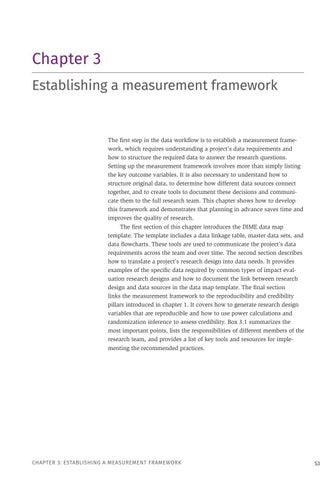Chapter 3 Establishing a measurement framework
The first step in the data workflow is to establish a measurement framework, which requires understanding a project’s data requirements and how to structure the required data to answer the research questions. Setting up the measurement framework involves more than simply listing the key outcome variables. It is also necessary to understand how to structure original data, to determine how different data sources connect together, and to create tools to document these decisions and communicate them to the full research team. This chapter shows how to develop this framework and demonstrates that planning in advance saves time and improves the quality of research. The first section of this chapter introduces the DIME data map template. The template includes a data linkage table, master data sets, and data flowcharts. These tools are used to communicate the project’s data requirements across the team and over time. The second section describes how to translate a project’s research design into data needs. It provides examples of the specific data required by common types of impact evaluation research designs and how to document the link between research design and data sources in the data map template. The final section links the measurement framework to the reproducibility and credibility pillars introduced in chapter 1. It covers how to generate research design variables that are reproducible and how to use power calculations and randomization inference to assess credibility. Box 3.1 summarizes the most important points, lists the responsibilities of different members of the research team, and provides a list of key tools and resources for implementing the recommended practices.
Chapter 3: Establishing a measurement framework
53





